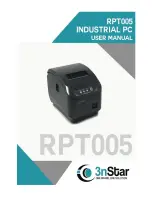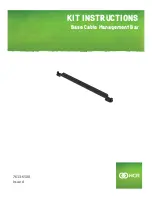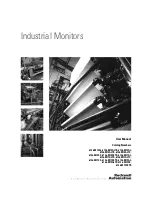
9
SPEAR™ Single-Phase Recloser System
INSTALLATION AND OPERATION INSTRUCTIONS
MN280048EN June 2016
Refer to
Service Information MN280012EN SPEAR Single-
Phase Recloser Control Programming Guide
for additional
information regarding how to set and change passwords.
Password recovery
If your password is lost, contact your Eaton representative.
Protection profiles
Two protection profiles capable of fully specifying control
operation are standard in the control. Each protection profile
includes the following as a minimum:
●
●
Overcurrent Protection
●
●
Hot Line Tag Functionality
●
●
Sequence Coordination
●
●
Operation Settings
Time current curves
Time-current curves are available for both fast and delayed
operations for phase protection. Each time-current curve
is selected from a list of pre-defined curves which can be
further customized by the user.
The time-current curves include the following modifications
for phase and ground protection:
●
●
Time Multiplier with a range of 0.1 to 25.
●
●
Time Adder with a range of 0 to 30 seconds in .01
second increments.
●
●
Minimum Response Time with a range of 0.01 to 1
seconds.
●
●
High Current Trip multiplier with a range of 1 to 32
multipliers.
●
●
High Current Trip Time Delay with a range of 0.01 to .150
second.
Sequence coordination
Sequence Coordination eliminates nuisance tripping through
trip coordination. It allows the control to step through
selected operations in the operating sequence without
tripping. The number of Sequence Coordination advances
is programmable from one to three operations to provide
trip coordination with a downline recloser. This feature is
independently programmable for each protection profile.
Cold load pickup
The control includes a Cold Load Pickup feature to prevent
the control from tripping due to inrush while energizing
non-fault system loads. This feature has independently
programmable minimum trip value, time-current curve,
reclose interval, and number of operations to lockout for
each protection profile. Cold Load Pickup also includes TCC
Multipliers, TCC Adders, Minimum Response Time, and
High Current Lockout. Also, direct values, not multiples of
minimum trip, are provided for high current lockout. When
enabled, Cold Load Pickup is active for any close operation.
Fast trips disabled
The control includes a Fast Trips Disabled feature to modify
protection, so that all trip operations use the programmed
Fast Trips Disabled (FTD) TCC. This feature is independently
selectable for each protection profile. All trip operations
will time on FTD TCC. Typically, TCC1 is fast and TCC2
is delayed. So, as an example, the control will change
its sequence from 2 fast and 2 delayed operations to 2
operations on FTD TCC when Fast Trips Disabled is enabled.
High current trip
The High Current Trip (HCT) feature will trip at a selected
multiple of phase minimum trip. The HCT definite time is
programmed independently from the normal TCCs. This
feature is independently selectable for each protection
profile.
High current lockout
The High Current Lockout (HCL) feature will automatically
lockout the control on the selected operation when current
exceeds a programmable level. The active number of
selectable operations to lockout is independently selectable
for each protection profile.
Thermostatically controlled heater
The control has a standard thermostatically controlled
heater for humidity control. The heater is powered from
input voltage.
Metering
The control provides instantaneous and/or demand metering
with programmable integration intervals for the following
functions:
●
●
Real, reactive, and apparent power including power
direction
●
●
Demand current and power
●
●
Instantaneous current
●
●
Instantaneous voltage
●
●
Instantaneous frequency
●
●
Instantaneous power factor
Sequence of events recorder
The SPEAR single-phase recloser control contains
capabilities to perform Sequence of Events with
time-stamping.
Factory-defined event types include:
●
●
Phase Trip and Lockout
●
●
Local Trip/Lockout (Front Op. Panel)
●
●
Frequency Trip
●
●
Ext. Close Request
●
●
Phase Fault
●
●
Overcurrent reset















































